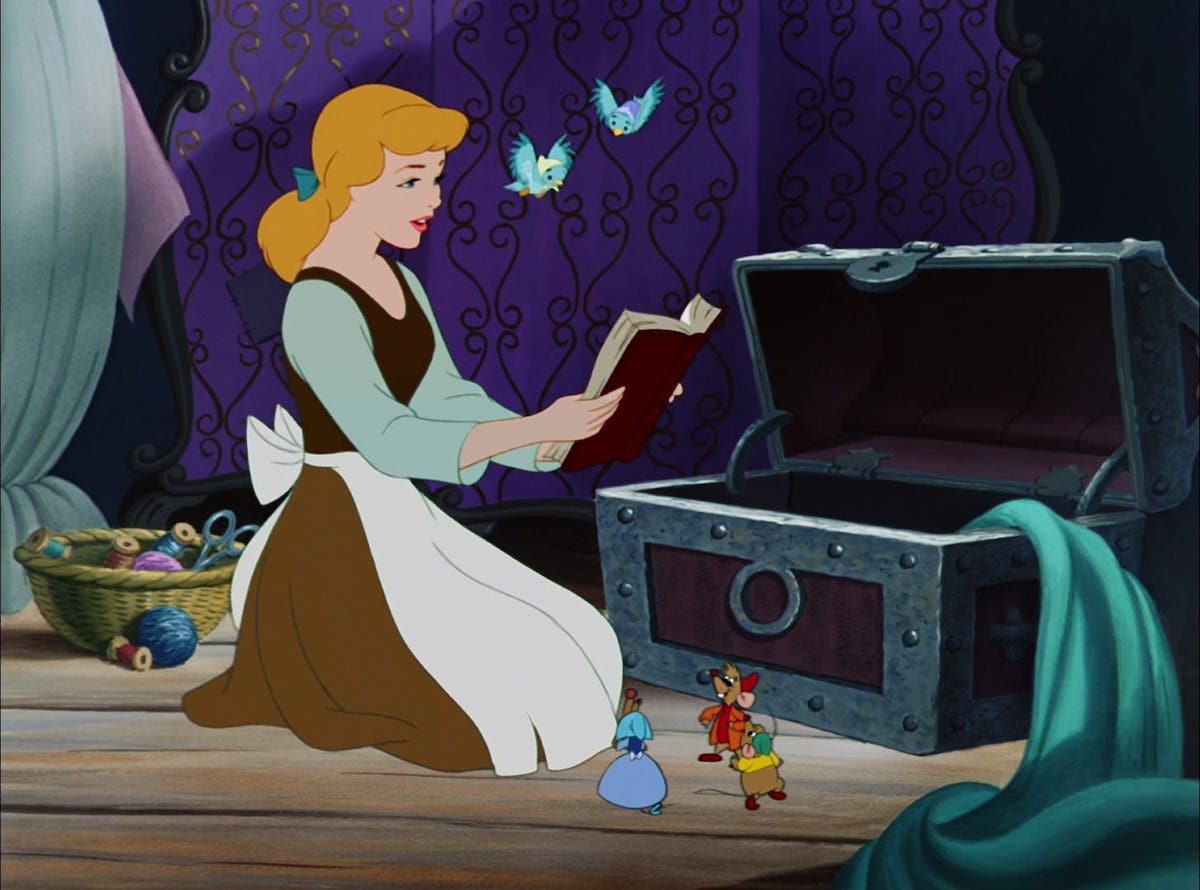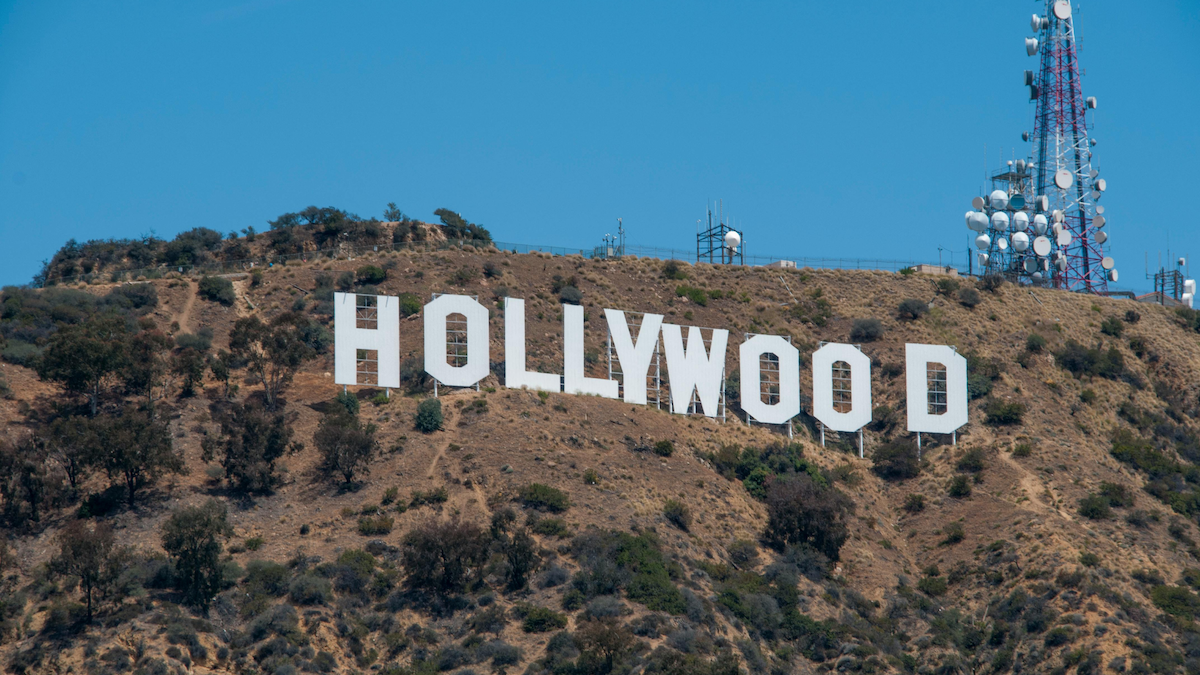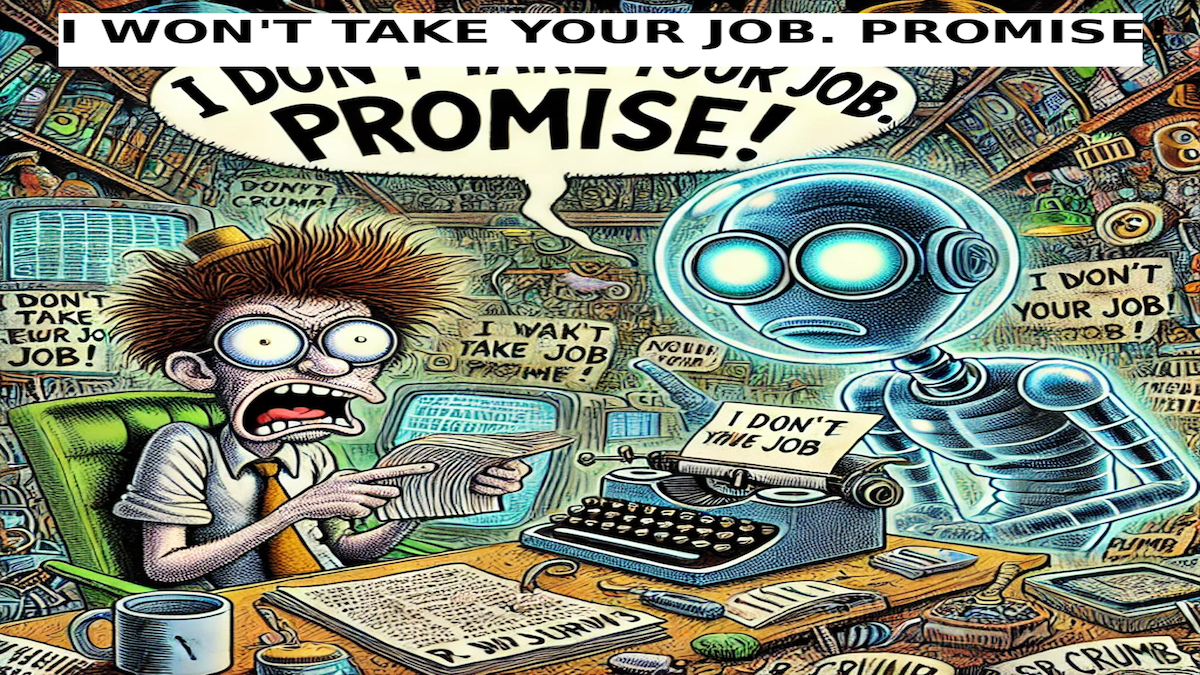LEGALLY SPEAKING, IT DEPENDS: Defamation
Christoper Schiller talks about the importance of truth in storytelling and the legal aspects of defamation of character.
Christoper Schiller talks about the importance of truth in storytelling and the legal aspects of defamation of character.
Writers draw from life to make up stories. And I'm not just talking about bio-pics or stories ripped from the headlines. That quirky character in your latest script that has the same interesting quirk as your Uncle Ralph? That's what I'm referring to. It's a way of making sure that the characters you create are believable. But pulling from our experiences and observations of people in real life can be dangerous. Do it wrong or to the wrong person and you could be facing the pointy end of a lawsuit. Using real life examples to fill our creations is a requirement for the job. The consequences of a misstep doing it is an occupational hazard.
What we're going to talk about today is one aspect of this risk called defamation. Though the laws and situations discussed apply to anyone, writers have a special dance they have to do with defamation due to the nature of our works being produced and shown to wide audiences. We'll look at how the specter of it hovers over all writers, how to manage that and come out with an approach with the best chance to avoid getting in trouble. How, you might ask? As always, it depends.
Defamation
Defamation is a big word. It is an umbrella term that covers a whole range of possible wrongs you can do to people. Unfortunately, it's one of those concepts that, while pretty clear from far away, it starts to get blurry when you get close to the details. For one thing, it can be situationally and jurisdictionally variable. Meaning, it depends on the context, the location of the offense, the laws in effect where the offended may be, the definitions of a whole bunch of terms used as well as other specifics to determine whether something has gone too far or is acceptable. But before we go too far, let's at least start with a general definition. (As always, this gloss will give you general parameters, for your specifics always consult with fully informed and knowledgeable legal counsel.)
Defamation is the class of torts where a publicly shared communication has caused a legally recognizable harm to the victim's reputation in a community.
To give a sense of how squishy that seemingly clear definition is, the following list of words used above can vary considerably in how they are each defined: “defamation,” “torts,” “publicly,” “shared,” “communication,” “caused,” “legally recognizable harm,” “victim,” “reputation,” “community.” Let's start the de-legalesing with the words you might not be familiar with and we'll get to the variations of the others as we go along.
Torts are legally recompensable causes of harm. (e.g.The tort of battery has as perpetrator (the “fist” owner) and a victim (the “ouch-ee”). Different jurisdictions define which versions of defamation they will recognize. Some see 4 or 5, others see only one, some still haven't fully decided if some versions are truly defamation, something else or nothing at all.
Types of defamation defined (very loosely)
Generally accepted, at least as definitions if not legal torts, in most jurisdictions defamation has four main variations. The most familiar to us are libel and slander. These very similar though arguably not identical offenses, regardless of how some jurisdictions treat them, are the most common forms of reputational harm. They vary in the permanence and impact they can have. Slander is publicly spoken injurious matter, while libel is affixed to a less ephemeral media than the air and transmitted by more than voice. Slander, where it is recognized is taken to be less harmful, since the offense is only expressed to the immediate crowd within hearing of the speaker. Consider the difference between “Did you hear what he said?” and “Did you see what he wrote?” If the new person answered no to both of these, the first can only be transmitted by a recollection (re-conveying a defamation is a new offense of defamation, by the way) from someone who was there. The offending words don't linger when spoken so the initial, immediate “public” who heard the offense can only be those at that exact time and place. The audience for libelous offense can grow at any time the medium containing the offending words is available, a much bigger pool for the original offender's audience.
There is a permanence to what writers write. Whether it be in a script seen and heard by millions when the movie is made, or an email missive that is passed around the office, writers need to be aware of potential libel in what they set down.
Before we get into the details of what constitutes a defamational statement and how to avoid it, I want to at least briefly cover the other two, much lesser known but no less calamitous variations on the theme for a writer.
False light is kind of a mirror reflection of the typical defamation. In this case, false light is falsely stating something that the general public would think was a good thing, but, the victim is still damaged by the reputational effect. My favorite example is a factually inaccurate video news report of an Amish woman winning the lottery. She would likely be mortified because of the religious transgressions that would be implied by such an event and would have a case against the television station even though the TV audience would think winning was a good thing and the community where her reputation would most be impacted by the implications of the falsehood, probably never saw the story air.
The final variation I'll cover is one where being truthful isn't the usual defense that it is for other forms of defamation. Making public private facts is exposing a private fact that though true, when made public to a wider audience than those who might have already known, would lower the victim's reputation in that wider audience. As with all forms of defamation, there are situations where the offense is, if not justifiable, is allowable. That's where the details, conditions and definitions talked about earlier come into play (the wishy-washy stuff).
Definitions defined (somewhat)
Although it's seldom that writers can take advantage of these differences while doing their main job, the type and participants in a communication matter. A defamatory statement must be heard by someone else to be actionable. It doesn't take much, one or more listeners counts but there are exceptions where certain listeners wouldn't count. Anyone who is bound in some way not to further communicate the shared information doesn't count. This includes priests hearing confession or lawyers counseling their clients. Then there are the situations that are exempt: testimony by anyone compelled to speak by a court, congressmen on the floor of the legislative chamber doing their job. Then there is the sharing component. If the person receiving the communication isn't part of the community that holds a relevant stake in establishing the reputation of the victim, then no harm is done.
This brings up the squishy question of what is the public, anyway? In the making public private facts version of defamation some small part of the public at large already knows the facts that would be damning if a larger part of the public (or just a specific, important to the victim, part) is to find out. Statements made to a group who doesn't know or don't care about the reputation of the subject wouldn't actually defame the victim.
There needs to be an actual harm caused to the reputation of the victim to be guilty of defamation. Some courts play a bit fast and loose with this, assuming a harm if there is a reasonable expectation that harm would have happened lowering a reputation. But the victim must be victimisable. There is a legal term for those “almost” victims that are unfortunate enough to not have a high enough reputation to actually be lowerable. It's called libel proof. For example, calling a prostitute a whore is not defamation while she's on the job. But, saying the exact same thing to her while she's at her family reunion more than likely would be (unless she has a very open minded family, or even cousin Bob, the reverend knew what she did for a living.)
And this leads to understanding what is meant by the at risk reputation in a community. A particular (important to the victim) community's impression must be changed with undesired, negative effect to the victim. The information can be positive (e.g. false light) but the reputation must actually be changed to harm the victim. This leaves a loophole if the community doesn't believe the intent of the speaker was to harm, like with Don Rickles' comedy schtick. But care needs be taken if you go down that road. The entire community must agree. Even if a small portion of all those who mean something to the victim take offense or lessen their view of the victim, harm has been done.
Defensive techniques (that don't always work)
Before I paralyze you from writing another word, there are some things that you can use to defend yourself against a claim of defamation. For a communication to be actionable, the insulting comment must have a truth value, meaning it must be able at least theoretically to be proved true or false. Calling someone a nincompoop (does anyone still use that term?) can't be proven true or false, so the big stick usually used in defamation cases (a false statement was made that damaged my reputation) is deflated. The statement is neither true nor false. Nonsense words aren't the only category here. There is puffery, clearly overinflated terms used without any intention to carry true weight (e.g. “You must have paid a billion dollars for that car, Daddy Warbucks!”) And a person's real opinion can be found not actionable. But be careful. “I think you're an ass.” is likely not to be defamatory. Hurtful, yes, but, no one is likely to believe you bray and have long ears. But, “In my opinion, you are a crook.” wouldn't fly, since the claim of being a crook is clearly provable and reputationally damaging. An opinion must be that, an opinion.
The truth shall set you free (usually)
Usually, if you are stating the truth about the subject, you are likely not to be found guilty of defamation. Usually. I've already referenced the making public private facts issue. There are times when you say something truthful and doing it specifically to hurt the subject in a manner to make the most impact. Usually with truthful statements the intent of the speaker will be taken into account by the judge and given enough situational sway, even a truthful statement, stated with enough venom, might still tip the scales against you. Of course there are exceptions to this (see below for a small sample.) In general, though, a true statement is much harder to find truly defamatory to a victim.
The names have been changed to protect the innocent (but not necessarily the writer)
Some people are under the mistaken belief that obfuscating the facts, changing the names, claiming it is all made up, is sufficient to keep you out of a defamation lawsuit. That is not the case. Even without naming names, if a community can identify (or even think they can identify) their friend as a target of the statements being made, defamational damage claims can be won for them. Even if the narrowing down can only be to a small group but not an individual in that group, if the group can be singled out and is small enough then any individual of that group can suffer the reputational harm, even if they personally were not named. It all matters in the details. (See, I don't always have to say it depends.)
Being vague, obtuse or “clever” might open more doors to defamation than close them. Even though you see the disclaimer at the end of movie credits that “all similarity to real persons alive or dead is purely coincidental” that doesn't prevent the connections to be made and the claims to be filed if the “facts” hit too close to home.
What does work in the speaker's favor is commonality of the representation. If there are lots of people who the character could be based on, that share that similar, unseemly trait on display, then any individual who happens to think it was them up on screen has much less of an argument. Composite characters that don't reflect any one individual strongly are a good defense to defamation claims.
Special cases
There are also special rules for dealing with people in the public eye that make it easier to defend against claims of reputational harm. These individuals are defined as public figures or those that live their lives within the general interests of the public's curiosity. Politicians and celebrities fall into these categories. The courts have balanced how the exposure from public discussion about these popular people may affect their reputations against the power that being public figures allows them to wield in responding to public opinion. A public figure can call a press conference to set the record straight. Your average citizen can't fix things as easily, so, a public figure has a higher burden of proof to hurdle in order to show that they have been defamed.
There is also a realm of semi-famous people that fall into similar notoriety, at least within the aspects of public interest that made them famous. These are called limited public figures. Examples of these are survivors of a plane crash, or an Olympic athlete. As long as the conversation is about the incident and surrounding events that the public remembers made them famous, they have the same burden as public figures to prove defamation. But if the stories go into areas that don't have anything to do with the fame inducing event, (e.g. the marital strife of the plane wreck survivor) they become regular people again in their defenses. Here rises one of the important elements in determining the level of burden of proof, newsworthiness. This is a judgement as to how much public attention is due the person because of the events they participate in. The more newsworthy incident the more latitude the writer is given.
Bringing back the dead (recounting historical events)
Dead people have reputations too, and so do their descendants, so many courts recognize the reputation of the historical figure with regard to defamation. Historical accounts can be tricky to calculate how much latitude a writer will have in portraying the real life people in the story. Context is a key element. If the portrayal is attempting to recreate historic events then a higher scrutiny may be applied to all incidents. A scene that is pure fiction about the real persons may be taken as being presented as fact, very risky. Unless there is a belief that there is no way to know what actually happened, then the truth value is missing. And if you take historically accurate characters and deliberately place them in fantasy surroundings (ala The League of Extraordinary Gentlemen) you might find more leeway if a court comes to review your work. In that case the standard disclaimer at the end of the credits might hold more water.
But, it depends.
- More articles by Christopher Schiller
- Meet the Reader: 'Bio Tricks' for Bio Pics
- Legally Speaking, It Depends: Life Rights - Who, What, Why?
Get more insights into protecting yourself with our on-demand webinar, Screenwriter Contracts Decoded
Download Now!
Christopher Schiller is a NY transactional entertainment attorney who counts many independent filmmakers and writers among his diverse client base. He has an extensive personal history in production and screenwriting experience which benefits him in translating between “legalese” and the language of the creatives. The material he provides here is extremely general in application and therefore should never be taken as legal advice for a specific need. Always consult a knowledgeable attorney for your own legal issues. Because, legally speaking, it depends... always on the particular specifics in each case. Follow Chris on Twitter @chrisschiller or through his website.





